This film began its life in 1899 as a play, also called Sherlock Holmes, written by William Gillette with the blessing of Sir Arthur Conan Doyle, Holmes’ creator. Gillette played Holmes in his play, and by the time Essanay Studios produced a film version, he’d played the role on stage over 1,300 times in the intervening 17 years.
Long considered a lost film, a serialized version of the film from 1920 surfaced in France in 2014. Film curator Céline Ruivo discovered a print at the Cinémathèque française. The film was restored by the San Francisco Silent Film Festival. From their site:
What survives is the duplicate negative sent over to France after the First World War. The original film was a nine-reel feature and, when it came to Europe, it was reissued as a four-part serial, each chapter given its own slightly lurid title. The episode having Holmes lured into the Stepney Gas Chamber is now called, ominously and with appropriate misdirection, “Une Nuit tragique”; and in the best serial tradition every chapter is introduced with a recap of last week’s action. Happily, the only other alterations are in the intertitles. Some have been moved around or deleted, all of them hastily translated. But the picture itself is intact. As best as we can tell, not a frame of the original is missing.
Gillette does appear a bit old for the part, which makes sense as he’d been playing it for 17 years and was 63 when the film was made, but at the same time he’s the quintessential Holmes. Perhaps I think this because this film set the rules for all the Holmes films to follow, but I don’t think so. Gillette really does embody what Holmes should be. He’s tall, lean yet powerful, handsome but not too handsome, and he carries himself with a confidence that borders on imperious yet is never arrogant. Basil Rathbone, arguably the most famous cinematic Holmes of all time, may well have been chosen for his resemblance to Gillette.
As any fan of the great detective knows, Holmes is only half of the equation, for where goes Sherlock Holmes so goes Dr. Watson. Here, Edward Fielding plays the good doctor, and darned if he doesn’t bear more than a passing resemblance to Nigel Bruce— Rathbone’s sidekick in 14 Holmes films.
The plot here is rather circuitous, and at times nonsensical, and the majority of the enjoyment I got from this film came from Gillette’s presence onscreen, and the atmosphere of the film. Based loosely on the Doyle story “A Scandal in Bohemia,” Sherlock Holmes is a somewhat plodding film.
The story centers around love letters written by a prince to a woman, now deceased, to whom he isn’t married, that are now the property of her sister Alice. The prince wants the letters back, for fear that the letters may end up in the wrong hands and be either used for blackmail or to soil his reputation, but the sister wants to keep them. Thus begins a circuitous tale of crooks trying to dupe her out of the letters by inviting her to live with them, then locking her up. She’s hidden the letters somewhere in their house, but they can’t find them. Keyholes are peeped through, walls are listened through, doors are open and shut, hands are wrung, brows wiped, it never ends.
Meanwhile, we see Holmes, at home on Baker Street. Who comes to visit? Watson! Apparently, they’ve only just met and aren’t yet roommates. Shortly after Watson’s arrival, Holmes must leave, to visit the home of the Larrabee’s, who are the kidnappers. He suggests Watson read a book, then takes off.
Now at the Larrabees, we see them still trying to locate the hidden letters. Meanwhile, the Larrabee’s maid has let Alice out of her room. Suddenly the doorbell rings. It’s Holmes. He’s left standing on the porch for what seems ages while the criminals deliberate and debate what to do. Finally, they let him in. In what is maybe the best scene of the early portion of the film, the camera moves about the room with Holmes’ gaze as he gets the lay of the land. The Larrabees try to trick Holmes into believing one of them is Alice, but he sees right through their subterfuge. The real Alice is produced. It’s unclear why she doesn’t seem to want to be rescued, but she seems indifferent to both her predicament and to Holmes’ presence.
Holmes tricks her into revealing where the letters are, but even still she opts to stick around the house. Why? Who’s to say? In any event, once he leaves, she finds a new hiding spot and returns to her room. 40 minutes of the film have gone by and we’re basically still where we started.
What about Watson? We rejoin him in Holmes’ study and find that he’s still reading that book. What was the point? Who’s to say? In any event, he finally gives up, and informs Holmes’ butler that he can’t wait any longer, and heads home.
We return to Larrabee manor, and learn that the criminals have decided to enlist the help of Professor Moriarty to thwart Holmes.
Holmes goes home and goes to bed, and dreams about Alice. Back at the house, Alice is daydreaming of Holmes. Romance seems imminent. And… more stuff happens. I normally go through the major plot points, but honestly, this film is a never-ending string of people coming in and out of rooms, wiping their brows, wringing their hands, and listening at keyholes, and it seems to never end.
Eventually, the film does end, and maybe that’s the best thing I can say about it.
I watched this film on YouTube.
Next I’m watching The Floorwalker [1916], directed by Charles Chaplin.

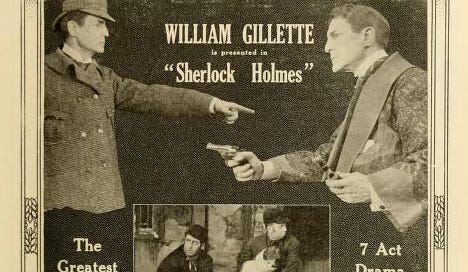




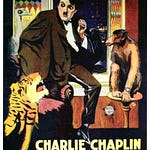
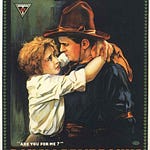
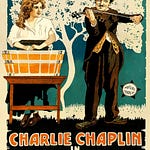


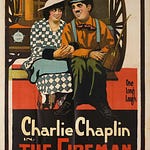

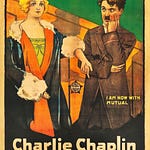
Share this post